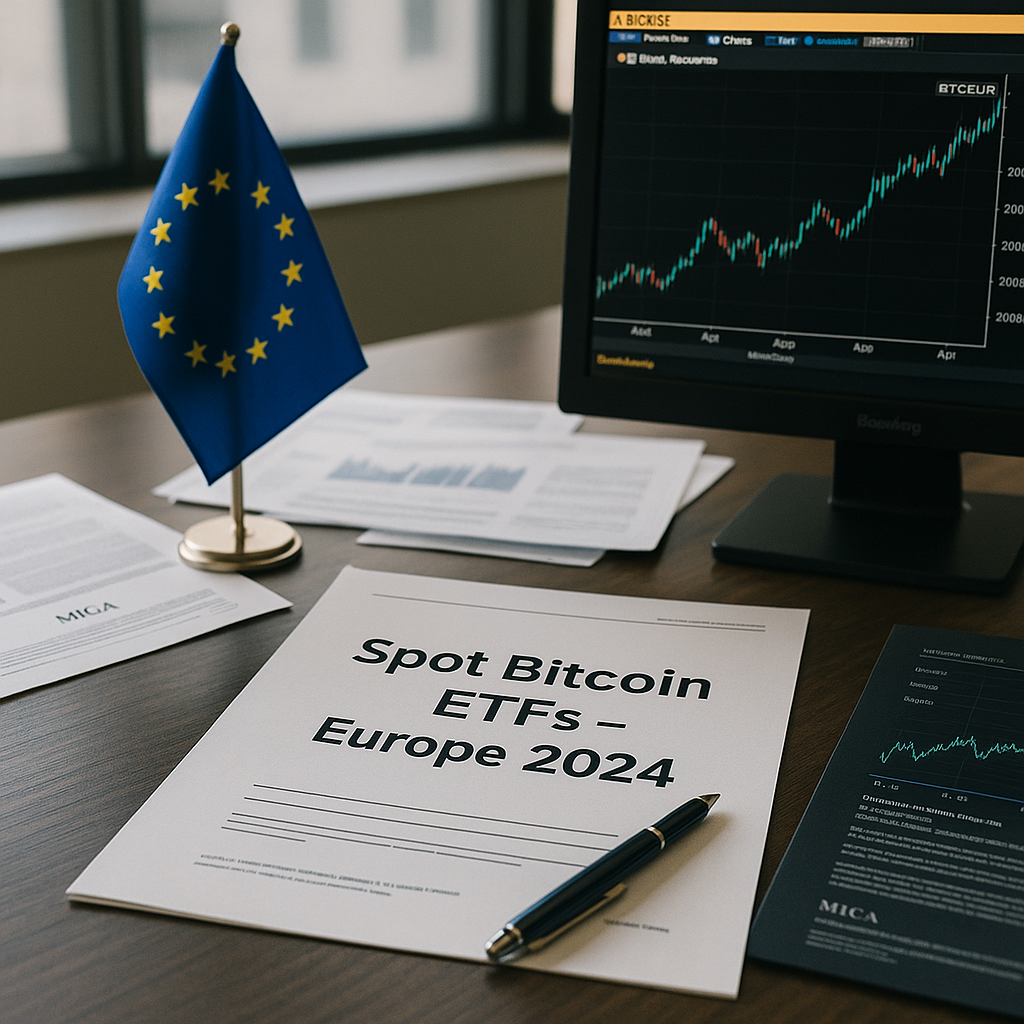Spot Bitcoin ETFs Gain Approval in Europe
In a landmark decision, European financial regulators approved the first spot Bitcoin ETFs on June 13, 2024, marking a pivotal shift in the continent’s approach to digital assets. The move positions Europe as a competitive hub for regulated crypto investment products, following the United States’ approval of similar ETFs earlier this year.
This development comes amid rising investor demand for safer, more transparent exposure to Bitcoin and reflects broader acceptance of digital assets in traditional finance. With products expected to launch on exchanges in Germany, France, and the Netherlands as early as Q3 2024, the implications for crypto markets — and global finance — are profound.
What Is a Spot Bitcoin ETF?
A spot Bitcoin ETF is an exchange-traded fund that holds actual Bitcoin, as opposed to futures contracts or synthetic exposure. Shares of the ETF trade on traditional exchanges and are priced based on the current market price of Bitcoin.
This model allows investors to:
-
Gain exposure to Bitcoin without directly holding it
-
Avoid custody risks and private key management
-
Access regulated, liquid Bitcoin investments via traditional brokerages
Spot ETFs are viewed as a bridge between traditional finance and crypto, especially for institutional capital.
Why Europe’s Approval Matters
While Canada and the U.S. have already approved spot Bitcoin ETFs, Europe’s regulatory environment is unique — and in many ways, more fragmented. The approval of these products represents a coordinated effort by EU financial authorities, particularly under the Markets in Crypto-Assets (MiCA) framework.
Key reasons this approval is significant:
-
Pan-European Impact: ETFs authorized under MiCA can be passported across EU nations, potentially reaching over 400 million investors.
-
Regulatory Legitimacy: Europe’s cautious approach now turns constructive, signaling maturity in crypto oversight.
-
Institutional Access: Pension funds, banks, and family offices gain a compliant vehicle to allocate capital to Bitcoin.
Early Issuers and Exchanges
Among the first approved ETFs are:
-
iShares Bitcoin Core EU (IBCE) by BlackRock Europe
-
21Shares Bitcoin ETP EU
-
CoinShares Physical BTC – Euro Zone Edition
These funds are expected to list on:
-
Deutsche Börse Xetra (Germany)
-
Euronext Paris and Amsterdam
-
SIX Swiss Exchange EU-licensed segment
All products are 100% physically backed, with custody provided by regulated European entities such as BitGo Europe and Komainu.
Investor Demand Is Growing
Data from Q2 2024 shows surging European interest in digital assets:
-
40% of EU-based wealth managers plan to increase crypto allocations this year
-
Institutional survey by PwC: 65% cite ETFs as the preferred access method for crypto
-
Retail appetite is high in countries like Germany, Spain, and the Netherlands, where crypto adoption has grown 30% year-over-year
This approval offers a secure, tax-compliant, and familiar entry point, removing key friction points for investors concerned with custody and volatility.
Market Reactions Post-Approval
Bitcoin Price
On the day of the announcement:
-
BTC surged from $66,300 to $69,500, driven by institutional optimism
-
Analysts expect additional upside if ETF flows materialize in size during Q3
ETF Market Expectations
Industry analysts forecast:
-
€3–5 billion in inflows within the first six months
-
Early demand likely concentrated in Germany and Switzerland, then expanding into Southern and Eastern Europe
Impact on Altcoins
With Bitcoin now institutionalized in Europe:
-
Ethereum spot ETF applications are gaining momentum with ESMA
-
Other blue-chip digital assets may follow under MiCA-compliant listings
-
Solana and Polygon ETPs are already in early-stage discussions
Regulatory Framework: MiCA in Action
The approval is the first major application of MiCA (Markets in Crypto-Assets), the EU’s comprehensive regulation for digital assets. Key highlights:
-
Uniform licensing across 27 member states
-
Strict custody and reserve rules for crypto-backed products
-
Enhanced disclosure and transparency requirements for issuers
MiCA provides the regulatory clarity that institutions need, offering consumer protection without stifling innovation. The ETF approval demonstrates MiCA’s ability to facilitate secure adoption while integrating crypto into Europe’s financial infrastructure.
Europe vs. the U.S.: A Competitive Dynamic
With both regions now offering spot ETFs, competition intensifies:
| Aspect | U.S. | Europe |
|---|---|---|
| Launch Date | Jan 2024 | June 2024 |
| Regulatory Framework | SEC, 1940 Act | MiCA, ESMA |
| Custody Model | Mostly Coinbase Custody | Mix of Komainu, BitGo, and banks |
| Currency Denomination | USD | EUR |
| Investor Type Focus | Institutional & Retail | Institutional & Cross-border |
Europe may have an edge in cross-border ETF harmonization and multi-currency product innovation, while the U.S. offers deeper capital markets.
Implications for the Future of Crypto Adoption
The green light for European spot Bitcoin ETFs opens up multiple avenues:
-
ETF-based retirement portfolios may include Bitcoin as a hedge
-
Banks and asset managers can launch structured crypto products
-
MiCA’s framework could become a model for other jurisdictions (e.g., Latin America, Southeast Asia)
This also sends a signal to skeptics: Bitcoin is becoming a legitimate, investable asset, not just a speculative tool.
Strategic Outlook: What to Watch Next
-
First ETF inflows and trading volumes — will they match U.S. numbers?
-
Ethereum ETF applications under MiCA — likely by Q4 2024
-
ETF product innovation — Euro-denominated BTC staking ETFs? Multi-asset crypto baskets?
-
Banking sector engagement — will Europe’s largest banks create integrated crypto services?
Conclusion: Europe Steps Into the Arena
Europe’s approval of spot Bitcoin ETFs marks a milestone in global crypto adoption. With MiCA providing regulatory clarity, and investor appetite rising, the region is poised to become a major pillar in the maturing digital asset ecosystem.
As ETFs launch across the continent, the market will closely watch how institutions — from Frankfurt to Paris to Madrid — respond. The success of these products will determine not only the flow of capital, but the pace at which Bitcoin becomes embedded in Europe’s financial DNA.
